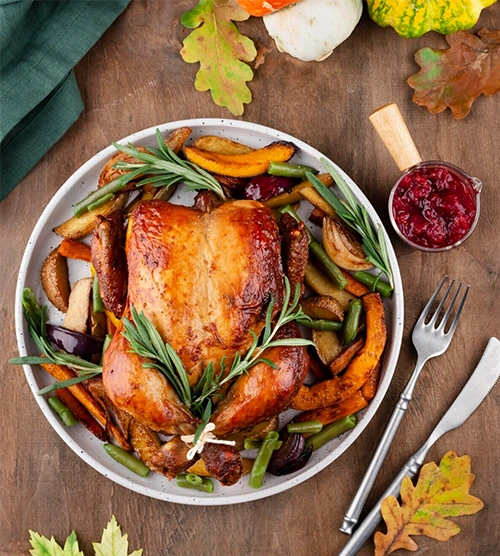

Top Health Benefits of Golden Roasted Goose You Need to Know
Roasted goose is a nutrient-rich, flavorful dish that offers a unique profile of health benefits. Goose meat is particularly high in protein, providing essential amino acids necessary for muscle repair, immune function, and overall cellular health. It is also a significant source of iron, especially heme iron, which is more readily absorbed by the body compared to plant-based sources — making it beneficial for individuals prone to anemia. Additionally, goose is rich in B vitamins, particularly B6 and B12, which support energy metabolism and neurological function. Unlike lean poultry such as chicken or turkey, goose meat has a higher fat content, most of which is monounsaturated fat, the kind also found in olive oil — considered heart-healthy in moderation. Goose fat, often rendered and saved, is prized in many traditional cuisines for its rich flavor and cooking versatility. When accompanied by roasted vegetables, the dish provides a balanced meal with fiber, antioxidants, and phytonutrients from the plant-based components, rounding out the nutritional profile.
Recipe :
For 4 people
Enjoy your festive roasted goose feast!
Cooking a whole goose requires attention to detail and proper preparation to achieve the perfect balance of crispy skin and tender, juicy meat. One of the most crucial steps is to thoroughly dry the skin before roasting; this helps render the fat more effectively and leads to a beautifully crisp exterior. Scoring the skin lightly or pricking it (without cutting into the meat) can also aid in releasing excess fat during roasting. Because goose is fattier than most poultry, placing it on a rack in the roasting pan allows the fat to drip away, preventing the bottom from becoming soggy and overly greasy. Seasoning the bird both inside and out ensures depth of flavor, and stuffing the cavity with aromatics like apples, onions, garlic, and herbs adds a subtle sweetness and complexity. It’s also essential to allow the roasted goose to rest after cooking — about 15 to 20 minutes — so the juices redistribute evenly throughout the meat. Monitoring internal temperature (aiming for around 74°C or 165°F in the thickest part) is key to preventing dryness or undercooking.

While roasted goose is a rich and satisfying dish, it may not be suitable for all dietary preferences or health conditions. Due to its high fat and calorie content, it may not be ideal for individuals following low-fat or calorie-restricted diets, particularly those managing heart disease, high cholesterol, or trying to lose weight. However, for those on a high-protein or ketogenic diet, goose can be an excellent main course, especially if served without the skin to reduce saturated fat intake. People who avoid red meats may prefer leaner poultry options like chicken or turkey, but goose can still be enjoyed occasionally as part of a balanced diet. For gluten-free or low-carb diets, it pairs well with non-starchy vegetables like green beans or roasted brussels sprouts. To make the dish more diet-friendly, excess fat can be trimmed before cooking, and lighter side dishes — like salads or steamed greens — can balance the richness. Ultimately, moderation and mindful portioning are key when incorporating roasted goose into any meal plan.
...